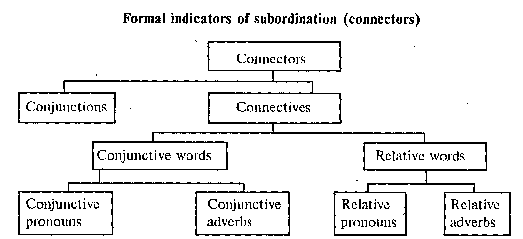
302
The difference between conjunctive words and relative words lies in their role within the sentence or clause.
In the case of conjunctive words the choice is determined by the structure and meaning of the subordinate
clause itself:
I don’t know who he is. (who is a predicative: he is who)
I don’t know where he is. (where is an adverbial: he is where)
I don’t know when he will come next time. (when is an adverbial: he will come next time when)
In the case of relative words the choice depends on the antecedent: in the main clause:
This is the man whom we spoke about yesterday.
This is the book which I promised you.
This is the place where we live.
This is the time when we usually have dinner.
When clauses are joined by connectors they are said to be joined syndetically. If no special linking element
is used they are said to be joined asyndetically. In some cases inversion is employed as a signal to indicate the
subordination of one clause to another.
Some subordinating conjunctions are homonymous with prepositions (like, fill), some with both prepositions
and adverbs (after, since, before). Some are homonymous with participles (supposing, provided), some
resemble nouns and nominal phrases denoting time (the very moment, the next time, the instant, the second) or
adverbs (immediately, directly, once).
§ 146. Although the relationship of subordination requires only two members, a complex sentence may
consist of more than two clauses. It may form a hierarchy of clauses. This is called consecutive or
successive subordination.
I see [that you have lost the key (which I gave you)]
Accordingly the structure of the sentence is:
Main clauses
< Subordinate clause < Subordinate clause
The main clause may have several subordinate clauses of equal rank, that is coordinated with one another.
This kind of relationship is called parallel subordination or co-subordination, and the
subordinate clauses are homogeneous.

